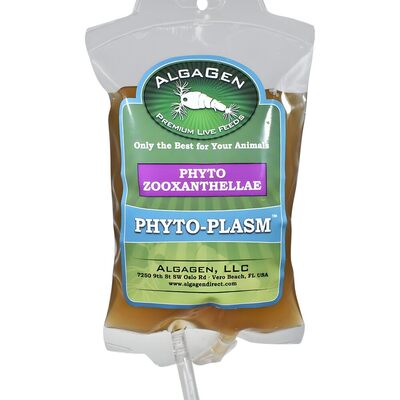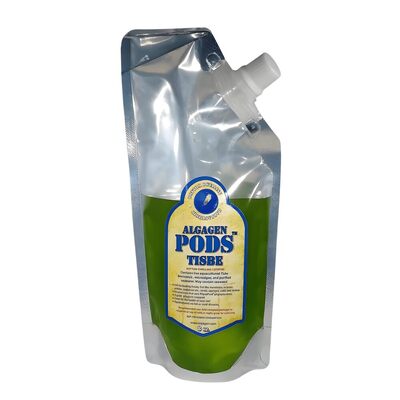Creating a thriving aquarium environment involves more than maintaining water quality and selecting suitable fish species. A well-balanced and dynamic ecosystem relies on a variety of tiny organisms that contribute to the health and vitality of the tank. Among these, live rotifers are a critical component that can significantly enhance the well-being of your aquarium inhabitants. This article will explore what live rotifers are, their benefits, and how to incorporate them into your fish tank effectively.
Understanding Live Rotifers
What Are Rotifers?
Rotifers are microscopic aquatic animals that belong to the phylum Rotifera. They are found in a wide range of freshwater and marine environments and are known for their distinctive wheel-like ciliated structures, which they use for locomotion and feeding. These tiny organisms typically range from 50 to 500 micrometers, making them an ideal food source for various small fish and invertebrates.
Why Choose Live Rotifers?
Live rotifers are particularly valued in aquariums for their role as a live food source. Unlike dried or frozen feeds, live rotifers provide several advantages, including higher nutritional content, better palatability, and stimulating natural hunting behaviors in fish. They are essential in breeding setups, where they provide a crucial food source for fish larvae and fry, which require high-protein diets to grow and develop.
Benefits of Live Rotifers for Your Fish Tank
High Nutritional Value
One of the primary benefits of using live rotifers in your fish tank is their high nutritional content. Rotifers are rich in proteins, essential fatty acids, and vitamins, which makes them an excellent food source for fish larvae and other small aquatic animals. This nutritional richness supports rapid growth and healthy development, particularly in the early stages of life when dietary needs are most critical.
Natural Feeding Behavior
Feeding your fish live rotifers encourages natural hunting and foraging behaviors. Unlike static food sources, live rotifers move through the water, stimulating the predatory instincts of fish and invertebrates. This provides mental and physical stimulation and helps keep your tank inhabitants active and engaged, promoting overall health and well-being.
Enhanced Breeding Success
For aquarists involved in breeding fish, live rotifers are an invaluable resource. Fish larvae and fry have small mouths and require tiny, nutrient-dense food that they can easily consume and digest. Live rotifers meet these needs perfectly, providing a readily available and digestible food source that supports higher survival rates and faster growth. Incorporating live rotifers into a breeding program can lead to more successful spawning and healthier offspring.
Improved Water Quality
While it may seem counterintuitive, feeding live rotifers can help maintain better water quality in your fish tank. Because live rotifers are active swimmers, they remain suspended in the water column and are less likely to contribute to waste build-up than uneaten dry or frozen foods. Additionally, by providing a natural food source that your fish consume quickly and efficiently, you reduce the risk of food decay and subsequent water quality issues.
Supporting Microbiome Diversity
Live rotifers contribute to the biodiversity of your aquarium's microbiome. They feed on microscopic algae, bacteria, and organic particles, playing a role in the breakdown of organic matter and the recycling of nutrients within the tank. This activity supports a more balanced and diverse microbial ecosystem, which benefits your aquarium environment's overall health and stability.
How to Introduce Live Rotifers to Your Fish Tank
Sourcing Live Rotifers
Live rotifers can be purchased from many specialized aquarium suppliers or online retailers. When sourcing rotifers, choosing a reputable supplier that provides high-quality, live cultures free from contaminants is essential. Look for cultures specifically bred for aquarium use, as these are more likely to thrive and benefit your tank.
Acclimating Live Rotifers
Before introducing live rotifers to your tank, acclimate them to the tank's water conditions. This process involves slowly mixing the tank water with the water in the rotifer culture over an hour or two to minimize stress and ensure a smooth transition. Proper acclimation helps the rotifers adapt well to their new environment and remain active and nutritious.
Feeding Live Rotifers
When feeding live rotifers to your fish, monitoring the quantity is essential to prevent overfeeding. Introduce small amounts at a time, observing how quickly your tank inhabitants consume them. Live rotifers should be added directly to the tank, preferably near areas where your fish are most active. This ensures that the rotifers remain suspended in the water column and are quickly consumed by your fish.
Maintaining a Rotifer Culture
Maintaining a rotifer culture at home is a viable option for aquarists who wish to provide a consistent supply of live rotifers. Here's an essential guide to setting up and maintaining your own rotifer culture:
- Setup: Use a small tank or container with aeration to keep the water oxygenated and the rotifers in motion. A simple air stone can suffice for this purpose.
- Water: Use saltwater with the appropriate salinity for marine rotifers or dechlorinated freshwater for freshwater species.
- Feeding: Rotifers feed on microalgae or commercially available rotifer feeds. Ensure you provide a steady food supply to maintain a healthy and growing population.
- Harvesting: To harvest rotifers, use a fine mesh net or sieve to collect them from the culture tank. Rinse them in clean water before introducing them to your aquarium to avoid contaminating the tank with culture water.
- Maintenance: Regularly clean the culture tank and monitor water quality to prevent the build-up of waste and harmful bacteria. Replace some of the water with fresh water periodically to maintain optimal conditions.
Tips for Maximizing the Benefits of Live Rotifers
Regular Monitoring
Monitor your tank inhabitants to ensure they are consuming the live rotifers effectively. Observe their feeding behavior and adjust the amount of rotifers added based on their needs and consumption rates. This helps prevent overfeeding and maintains water quality.
Balancing Diets
While live rotifers are an excellent food source, providing a balanced diet for your fish and invertebrates is essential. Combine rotifers with other live foods, frozen foods, and high-quality pellets or flakes to ensure your tank inhabitants receive a comprehensive range of nutrients.
Enhancing Breeding Programs
If you are using live rotifers as part of a breeding program, consider enriching them with additional nutrients before feeding. This process, known as "gut-loading," involves feeding the rotifers a nutrient-rich diet, which in turn enhances their nutritional value for the fish larvae and fry that consume them. This can be particularly beneficial in ensuring that your breeding efforts yield solid and healthy offspring.
Maintaining Water Quality
Regularly test and maintain your tank's water quality to ensure a healthy environment for your fish and the rotifers. Clean the tank, perform regular water changes to prevent waste build-up, and ensure that the rotifers remain a beneficial component of your tank's ecosystem.
Conclusion
Incorporating live rotifers into your fish tank offers numerous benefits, from providing a high-quality, nutritious food source to supporting natural feeding behaviors and enhancing breeding success. These tiny organisms play a vital role in maintaining the health and vitality of your aquarium, contributing to a more dynamic and balanced ecosystem.
By understanding the benefits and best practices for using live rotifers, you can optimize their impact on your tank. Whether you are a seasoned aquarist or just starting, adding live rotifers to your feeding regimen can significantly improve the well-being of your fish and other aquatic inhabitants. Embrace the power of these microscopic marvels and watch your aquarium flourish.





Recent post